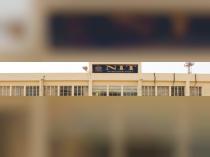What is the expected JEE Main cutoff for NIT Durgapur Round 3 Seat Allotment offered through JoSAA?
-
1 Answer
-
JoSAA R3 Seat Allotment results are expected to release on Jul 12. Candidates seeking admission to NIT Durgapur BTech course can refer to the below table having last year JoSAA R3 ranks for students falling under General- All India category for top 5 specialisations:
JEE Main Round 3 Closing Rank (General-All India) Course 2021 2022 B.Tech. in Computer Science and Engineering 7626 7871 B.Tech. in Electronics and Communication Engineering 12193 12966 B.Tech. in Electrical Engineering 17186 19768 B.Tech. in Mechanical Engineering 24676 28034 B.Tech. in Chemical Engineering 28908 34116
Similar Questions for you
NTA will release the JEE Main 2026 question papers a few days after the exam on the official website. Candidates can download the question papers PDFs and the answer keys from the website under their logins.
COEP Pune JEE Main cutoff 2025 has been released for all rounds and categories belonging to the All India quota. The JEE Main cutoff 2025 ranged from 3867 to 28286 for the students belonging to the General AI category in the first and the last round closing ranks. Students who are aiming for admission should secure a rank of at least 3867 to be have a chance at admissions. Please note that other categories and rounds will reflect different cutoffs accordingly.
Nirma University JEE Main cutoff 2024 has been released for admission to BE/BTech and BArch courses. In 2024, the cutoff for the General AI category was 22002 in the last round for admissions at Nirma University for the BArch programme. For the BE/BTech course, the cutoff for the General AI category was closed at 10642 for admissions to B.Tech. in Civil Engineering course specialisations.
If candidates are facing issue in live photo capture, it can be due to mismatch from photo uploaded in Aadhar. For this, they need to visit the Aadhar update centre and get their current photo updated in the Aadhaar database.
The issue can also be due to any servor error/slow internet connectivity for which candidates can try uploading it after some time. Also, there can be a case of laptop/computer not supporting the webcame, for this, candidates can upload the photo using QR code provided in the application process.
Who work on the rocket-propelled vehicles, they apply the principles of Mathematics, Physics, and Material Science to solve challenges related to these vehicles. Rocket Scientists are involved in the process of design and development of the vehicles such as small drones, satellites, and commercial aeroplanes.
Taking an Exam? Selecting a College?
Get authentic answers from experts, students and alumni that you won't find anywhere else
Sign Up on ShikshaOn Shiksha, get access to
- 65k Colleges
- 1.2k Exams
- 681k Reviews
- 1800k Answers


